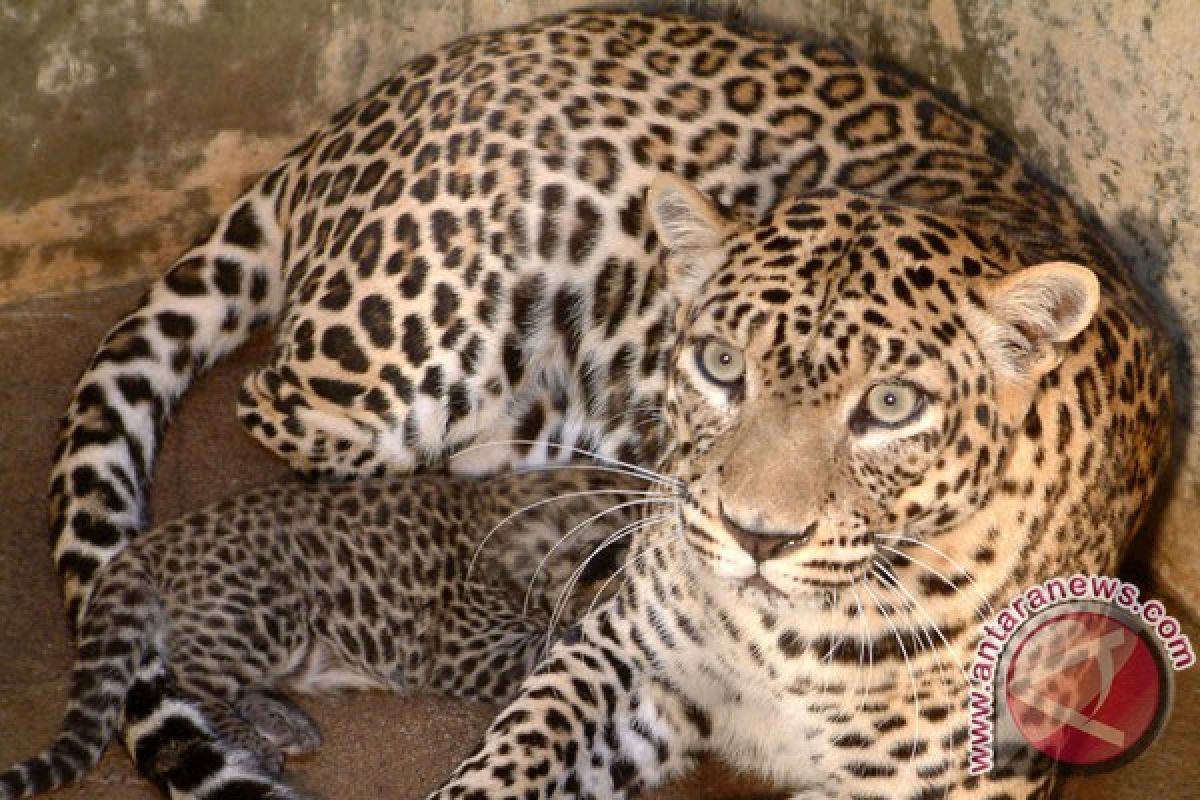"I think the animal was about two-and-a-half years old."Jakarta (ANTARA News) - The population of Javan leopards (Panthera pardus melas), who are thought to have migrated from South Asia to Java along a land bridge that bypassed Sumatra and Kalimantan during the Middle Pleistocene, continues to decline.
If nothing is done immediately to conserve this critically endangered species, it will soon vanish in the next few years.
According to the International Union for the Conservation of Nature (IUNC), the population of Javan leopards in the wild is estimated at less than 250 worldwide.
Meanwhile, Nurdin Razak, a wildlife photographer from Gresik, East Java, stated in Surabaya on Thursday that only about 7-10 Javan leopards remained in Baluran National Park in Situbondo.
He said that Javan leopards are found in Baluran, Alas Purwo, Meru Betiri, Bromo Tengger Semeru, Merapi and Merbabu, Ceremai, Gunung Gede, Ujung Kulon and Gunung Halimun National Parks on Java Island, but their total population is unknown.
While roaming through the Baluran National Park one night in February this year, Nurdin got the chance to photograph a Javan leopard.
"I took the photograph of a Javan leopard on February 18, 2012; it was the first ever picture taken in the last 22 years," Nurdin Razak remarked.
He added that the photo would be featured in the "Surabaya Wildlife Photo Exhibition" at the House of Sampoerna from May 26 to June 17.
The academician from Airlangga University`s school of tourism explained that he first encountered the Javanese leopard at dawn on February 18, 2012, which was a Saturday; he later managed to photograph it at night while travelling with a ranger in a car.
He pointed out that the Javan leopard was an endangered species because there were only about 250 of them left worldwide, with only about 7-10 in Baluran National Park.
The wildlife photographer, who has explored 33 national parks in Java and Bali, said that the leopard whose picture he had taken was 1.8 metres long from head to tail.
"I think the animal was about two-and-a-half years old when I spotted it at the Baluran evergreen area, some 4.7 km east of Bekol in Situbondo," Nurdin stated.
He noted that due to population growth, agricultural expansion and uncontrolled poaching, the population of Javan leopards is threatened by loss of habitat, which will eventually lead to their extinction.
Therefore, according to Nurdin, an overall effort should be made to protect these animals from extinction, including the enforcement of strict hunting laws.
Interestingly, the Javan leopard has also become a symbol of friendship between the people of Indonesia and Germany, and Berlin`s Tierpark is the only zoo which keeps the animal.
On January 16, 2012, two Javan leopard cubs - a male and a female - were born to their mother Shinta and father Wuppi in Tierpark zoo. The local community greeted their birth enthusiastically.
In a press conference before dozens of local newsmen, the Indonesian Ambassador to Germany, Eddy Pratomo, gave them traditional names: the female cub was named "Srikandi" and the male, "Arjuna."
The 6-year-old Shinta, the mother of Srikandi and Arjuna, was born in Taman Safari Indonesia, while Wuppi, 18, was raised in Wupertal, Germany.
According to Eddy Pratomo, the birth of the Javan leopard cubs was met with great enthusiasm from the German people, especially the citizens of Berlin.
"Even before the press conference on the birth of the Javan leopards, the German media had begun to publicise it," Eddy Pratomo observed.
He also appealed to the German people to love the rare animals as a symbol of friendship and goodwill between Indonesia and Germany.
"It also adds a note of happiness for the 60th anniversary of Indonesian-German relations this year," he said, adding that the successful breeding of the Javan leopard was an achievement of cooperation between Tierpark Berlin and Taman Safari Indonesia since 2010.
As part of this cooperation, Tierpark Berlin had lent a jaguar and a giraffe to Taman Safari Indonesia, which reciprocated by lending a pair of Javan leopards to Tierpark.
In addition to the Javan leopards, Tierpark Berlin also keeps a pair of Sumatran tigers and Sumatran elephants.
Several national parks on Java Island are said to keep Javan leopards, from Ujung Kulon on the tip of West Java to Alas Purwo on the tip of East Java, but because of habitat loss, their population is now unknown.
Wildlife Extra News has reported on its official website, www.wildlifeextra.com, that a rare Javan leopard was released back into the wild in June 2009, almost a year after it was found trapped in West Java.
The website stated that a team comprising members from the UK charity International Animal Rescue (IAR) and the Animal Sanctuary Trust Indonesia (ASTI) rescued the highly endangered animal, which they named "Aceng," and restored it to health.
Finally, on June 18, 2009 - almost 10 months after he was rescued - Aceng began his journey back to freedom in the wild.
(Uu.O001/INE/KR-BSR)
Reporter: by Otniel Tamindael
Editor: Priyambodo RH
Copyright © ANTARA 2012












